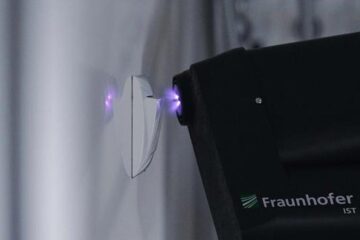
A recent study explains an essential component for proper mitochondrial function: The protein complexes MICOS and ATP synthase can communicate with each other. Dr. Heike Rampelt and Prof. Dr. Nikolaus…

The material could pave the way for sustainable plastics. The strongest part of a tree lies not in its trunk or its sprawling roots, but in the walls of its…

Human eggs often contain the wrong number of chromosomes, leading to miscarriages and infertility. A research team led by Melina Schuh at the Max Planck Institute (MPI) for Multidisciplinary Sciences…

Epigenetic data have enormous potential… The cells of our body all have the same genetic material. Their genome is identical, but the cells are different, because their genes are differently…

A reduced risk of infection and, as a consequence, a decrease in new infections are goals that have become even more important during the Corona pandemic. One important factor thereby…

Cerebral venous thrombosis is a rare, often severe disease that has been brought to public attention by the Covid 19 pandemic. A research group from Würzburg has now succeeded for…

Scientists at the University of Stuttgart have succeeded in controlling the structure and function of biological membranes with the help of “DNA origami”. The system they developed may facilitate the…

From the persistent droughts of southern Africa and Central America in the early part of the year to the more recent devastating extreme rainfall in Spain and the deadly Hurricane…

Researchers at the Max Planck Institute for Chemical Physics of Solids, in collaboration with Chongqing University and the Max Planck Institute of Microstructure Physics, have achieved a breakthrough in topological…

Importance of RNA modifications for the development of resistance in fungi raises hope for more effective treatment of fungal infections. An often-overlooked mechanism of gene regulation may be involved in…

HIRI researchers uncover control mechanisms of polysaccharide utilization in Bacteroides thetaiotaomicron. Researchers at the Helmholtz Institute for RNA-based Infection Research (HIRI) and the Julius-Maximilians-Universität (JMU) in Würzburg have identified a…

Most solids expand as temperatures increase and shrink as they cool. Some materials do the opposite, expanding in the cold. Lithium titanium phosphate is one such substance and could provide…

Long gone are the days where all our data could fit on a two-megabyte floppy disk. In today’s information-based society, the increasing volume of information being handled demands that we…

In the search for new materials that can enable more efficient electronics, scientists are exploring so-called 2-D materials. These are sheets of just one atom thick, that may have all…

How simulations help manufacturing of modern displays. Modern materials must be recyclable and sustainable. Consumer electronics is no exception, with organic light-emitting diodes (OLEDs) taking over modern televisions and portable…

Are humans or machines better at recognizing speech? A new study shows that in noisy conditions, current automatic speech recognition (ASR) systems achieve remarkable accuracy and sometimes even surpass human…

Additional data can help differentiate subtle gestures, hand positions, facial expressions The Complexity of Sign Languages Sign languages have been developed by nations around the world to fit the local…

Researchers from Osaka University introduced an innovative technology to lower power consumption for modern memory devices. Stepping up the Memory Game: Overcoming the Limitations of Traditional RAM Osaka, Japan –…